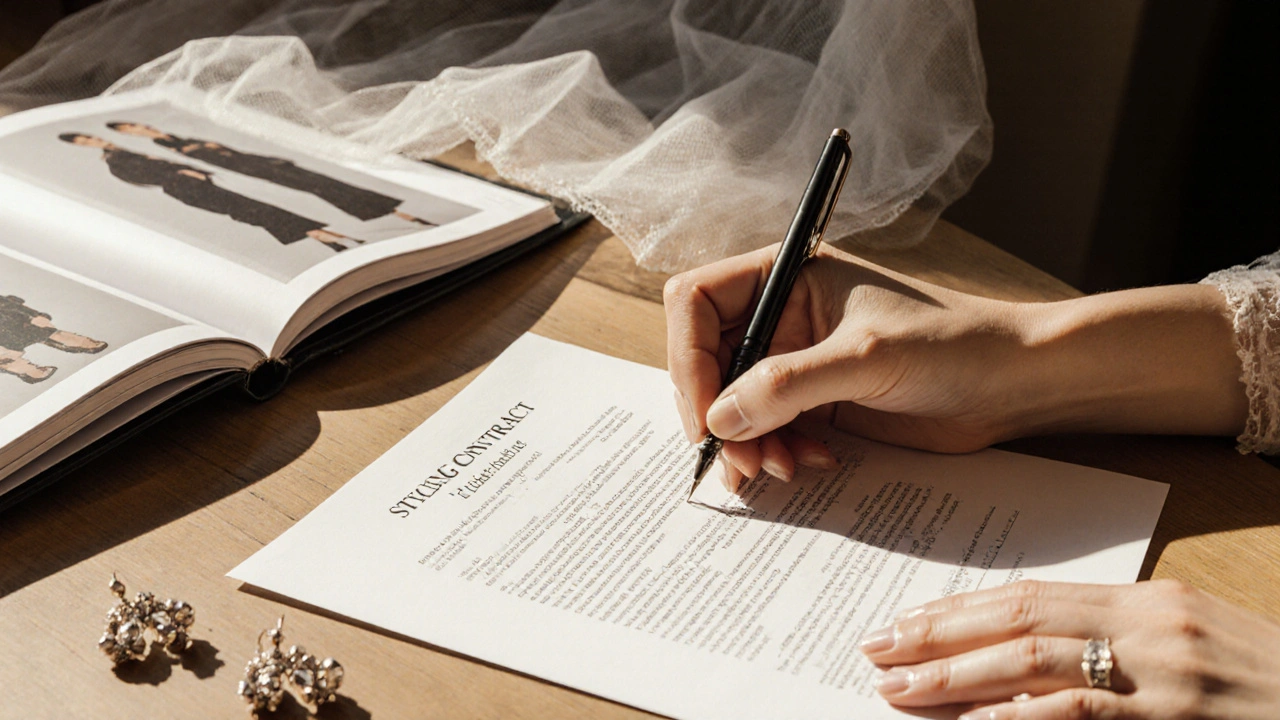Styling Contract: What It Really Means and How to Use It for Better Outfits
When people talk about a styling contract, a personal agreement you make with yourself about what you wear and why. Also known as wardrobe rules, it’s not a legal document—it’s the quiet promise you make to stop buying things that don’t work, and start wearing what already does. Think of it like a pact with your future self: no more impulse buys, no more clothes that sit unused, no more guessing what looks good on you. It’s about alignment—between your body, your routine, and your values.
A styling contract, a personal agreement you make with yourself about what you wear and why. Also known as wardrobe rules, it’s not a legal document—it’s the quiet promise you make to stop buying things that don’t work, and start wearing what already does. Think of it like a pact with your future self: no more impulse buys, no more clothes that sit unused, no more guessing what looks good on you. It’s about alignment—between your body, your routine, and your values.
Most people don’t realize how much energy they waste on clothes they don’t love. You’ve probably stood in front of your closet and felt like you have nothing to wear—even though it’s full. That’s not a style problem. That’s a styling contract violation. When your wardrobe doesn’t match your real life, you end up buying more to fix it. But the fix isn’t more stuff. It’s clarity. What do you actually do every day? Do you walk to work, sit in meetings, chase kids, or hop on a train with a coffee in hand? Your clothes should serve that life—not distract from it.
Look at the posts below. They’re all built around the same idea: wear less, wear better. The 1 bag rule, a minimalist approach to clothing where you pack everything you need in one carry-on. Also known as travel wardrobe, it’s a direct application of the styling contract: if it doesn’t fit in one bag, it doesn’t belong in your life. The 33 piece wardrobe, a precise capsule system that delivers 50–70 outfits with just 33 items. Also known as minimalist closet, it’s another version of the same promise: fewer pieces, more confidence. Even the 12–12–12 decluttering rule, a step-by-step method to streamline your wardrobe by removing 12 items in three categories. Also known as wardrobe audit, it’s just the cleanup phase before you rewrite your contract. These aren’t trends. They’re tools to help you keep your word to yourself.
Styling contracts work because they remove noise. They stop you from chasing what’s popular and start you on what’s personal. A petite frame? Your contract says: no baggy pants. A busy city life? Your contract says: no shoes that hurt after two blocks. A budget? Your contract says: no new clothes unless they replace something broken or worn out. It’s not about rules for the sake of rules—it’s about creating a system that works while you’re busy living.
You don’t need a stylist. You don’t need a Pinterest board. You just need to ask yourself: does this fit my life? Does it make me feel like me? If the answer isn’t a clear yes, it doesn’t belong. The posts ahead show you how real people built their own contracts—without spending a fortune, without following trends, and without the stress of a full closet. You’ll find out how to choose the right bottoms, how to layer accessories without chaos, how to tailor clothes so they actually fit, and how to spot the universal colors that work for you—no matter your skin tone or season. This isn’t about looking perfect. It’s about showing up as yourself, every day, without second-guessing what’s on your back.
Styling Contracts and Policies: What You Must Know Before Booking a Stylist
Posted by Elias Hartfield on Nov, 17 2025

Before booking a stylist, read their contract. Understand deposit rules, cancellation policies, and image rights. A clear agreement protects both you and the stylist-and ensures you get the look you want.
